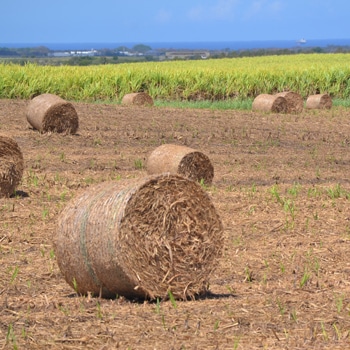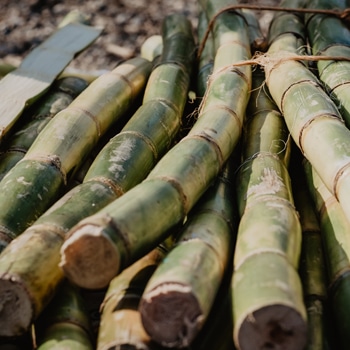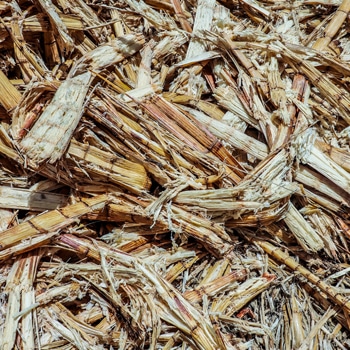Explore
- A multi-faceted industry
- SUGAR CANE AND ITS PRODUCTS
- The history of sugar in Mauritius
A multi-faceted industry
The sugar cane industry is steeped in history. A central pillar of the Mauritian economy for two centuries, this industry is now synonymous with innovation. Producing sugar, rum, bio-fertilisers, green energy, and animal feed, it sits at the heart of a circular economy model, and plays a key role in the environment, agriculture, and other industries.
The sustainable benefits of sugarcane for the planet
- Mauritius’ primary source of renewable energy (used as fuel to produce green energy).
- It protects the soil by fighting erosion, while its roots help to stabilise it. In addition, because it is replanted every seven years or so, the cane causes little disturbance to the soil while stimulating the microflora.
- Sugarcane is the champion crop at carbon sequestration and acts as a carbon sink, thanks to its increased capacity to absorb CO2 and restore oxygen.
- It lowers the temperature by almost 1°C thanks to its enhanced ability to retain and evaporate water and to reflect sunlight.
- Its carbon footprint is negative: across the entire chain, -0.17 kg of CO2 equivalent for every kilo of sugar produced.
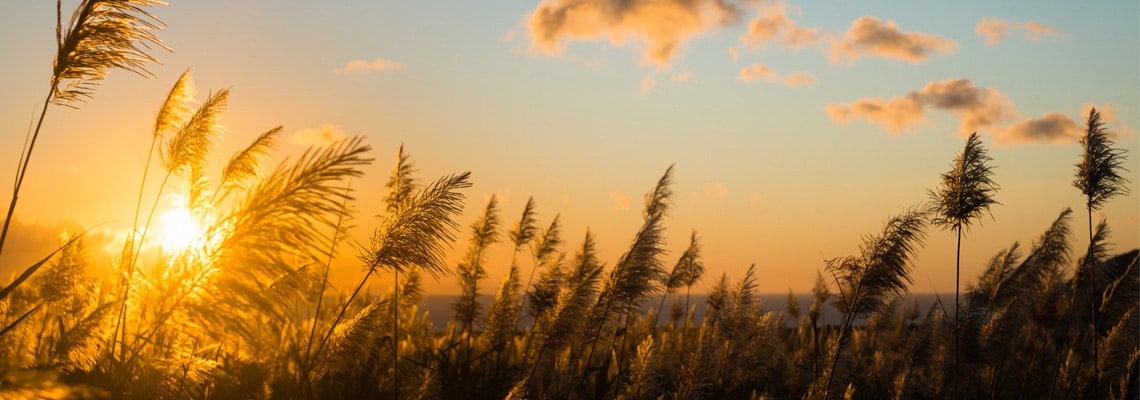
Sugar cane and its products
Sugar cane, a plant with multiple properties, allows Mauritius to produce gourmet wholegrain sugar and 5-star rums that are exported worldwide… but beyond that, the cane generates several by-products that are used for different purposes. In cultivating sugarcane, nothing is lost, everything has its use!
Naturally amber in colour, Mauritian whole sugars are made from sugarcane juice. Unrefined and containing no additives, the crystals retain the original benefits of the plant (minerals, vitamins, and antioxidants) and develop an extraordinary range of flavours, with aromas of honey, vanilla or liquorice. This makes sugar one of Mauritius’ most famous local products!
Molasses is the syrupy residue that forms after the sugar crystallises and is used for different purposes: a major ingredient in making traditional sugar rums, and as a source of protein in feed for ruminants. It is also transformed into bioethanol for many uses (perfumes, vinegars and pharmaceutical products, solvents, etc.).
Scum is the residual organic matter contained by the sugarcane juice and is produced when the juice is purified after extraction. Vinasse is a residue from the distillation of molasses. Bagasse ash, on the other hand, results from burning the cane’s fibres. All these products are used to add natural fertiliser to the soil, improving its organic matter content and correcting its acidity.
After the sugar cane is crushed to extract its juice, what remains is a fibrous mass called ‘bagasse’. This biomass is burnt in thermal power stations attached to the sugar factories to produce steam and electricity. The surplus electricity that the sugar factories do not use supplies Mauritius with 20% of its energy needs, allowing the country to partially replace fossil fuels with renewable, local energy.
Did you know?
- Mauritius is the world’s leading exporter of gourmet sugars, shipping about 155,000 tonnes per year. Our Village Boutik invites you to discover their nuances with a guided tasting of a dozen such sugars, each with its own incomparable flavour and texture. We are the only site on the island to offer such a variety.
Several rums from Mauritius are awarded international medals every year. The Village Boutik invites you to discover the aromatic profiles of fifteen 5-star rums from New Grove, the oldest distillery on the island. Our guided tasting will enhance your understanding of the world of rum.
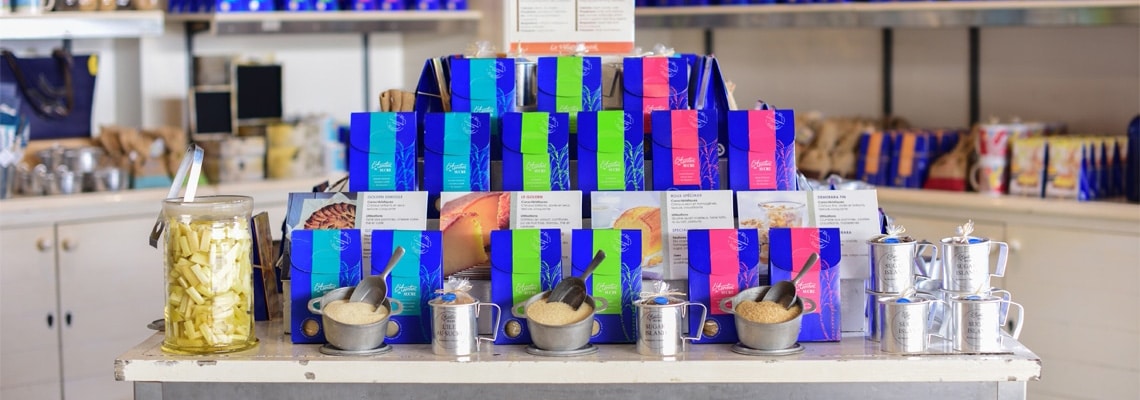
The history of sugar in Mauritius
Sugar cane has had an unusual history – a history that has left its mark on most aspects of life in Mauritius, forging its people and their mentality, shaping its society and its landscapes, and inspiring much of its culture.
The first cane plant was introduced in 1639, following the arrival of the first settlers – the Dutch. However, this promising crop was abandoned when the Dutch deserted the island, judging the living conditions too difficult to allow the establishment of a viable colony.
When the French conquered the island in 1715, other crops were initially prioritised: indigo, coffee, ebony… It was not until the 1740s that sugar cane finally took off, under the leadership of Governor Mahé de Labourdonnais. After slavery was abolished in 1835, the planters of Mauritius –under British rule since 1810 – were forced to find a new workforce to tend their crops. The British colonial administration brought in indentured labourers from India in their hundreds – one of the largest migratory waves in Mauritius’ history.
The sugar sector is gradually transforming into a sugar cane industry. Nearly 250 sugar factories in the 19th century have become three ultra-modern sugar factories in the 21st century. The industry no longer consists solely of growing sugar cane to produce sugar; it has expanded to include other sectors, in particular the production of green electricity for the island. The Mauritian economy has diversified, but sugar remains one of the country’s main export products, as evidenced by the vast sugarcane fields that cover the island.
Visit L’Aventure du Sucre museum to discover in detail the fascinating history of sugar cane and Mauritius!


